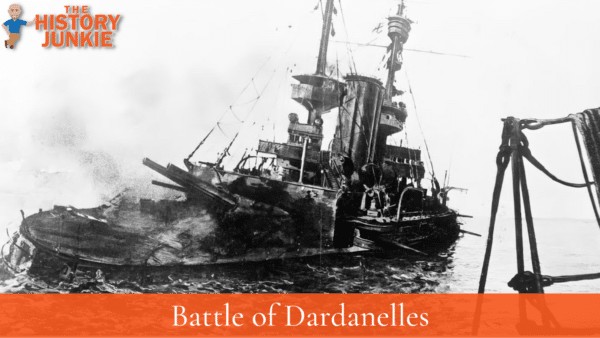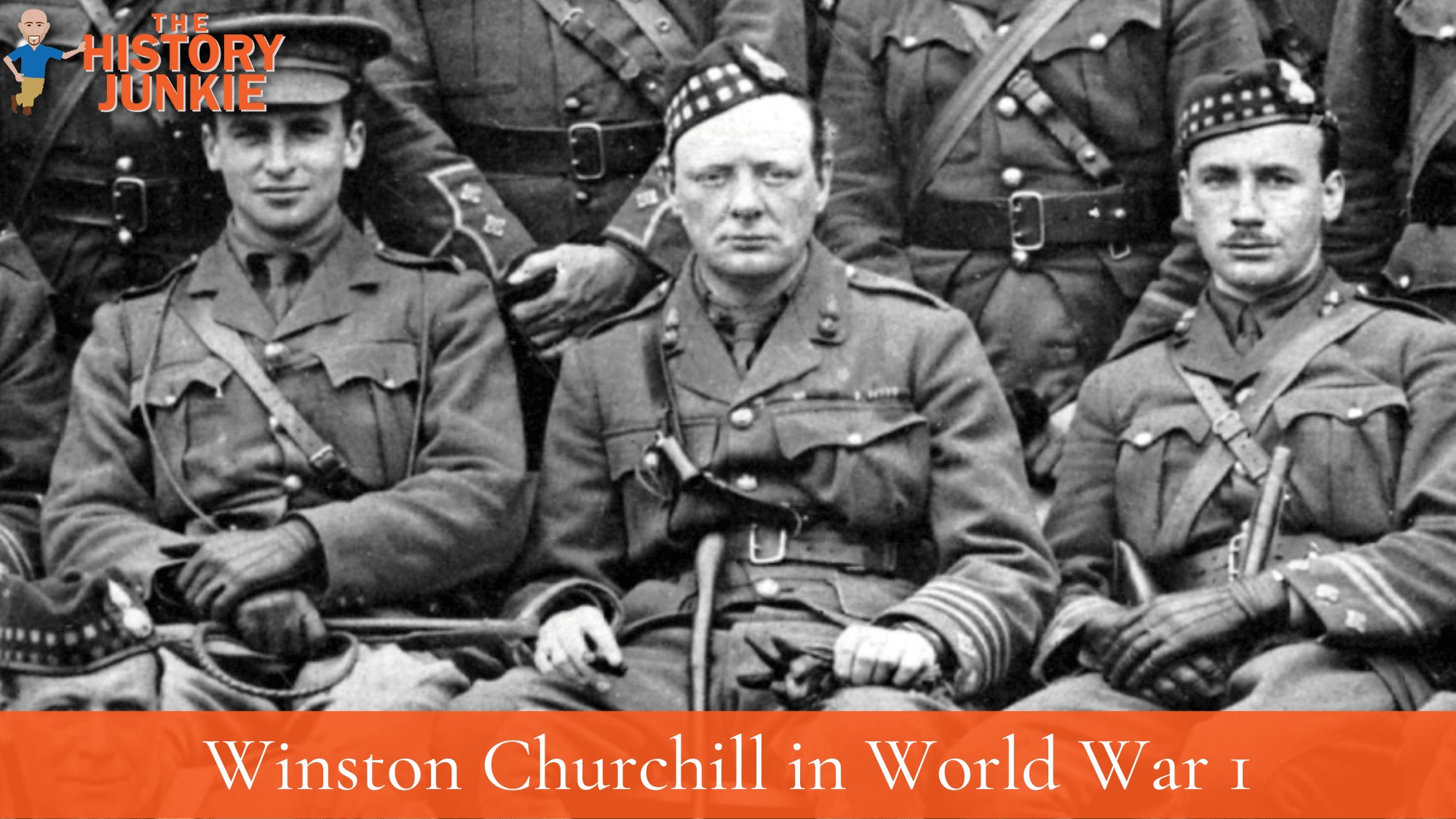After securing War Cabinet backing for the Battle of Dardanelles, Winston Churchill, as First Lord of the Admiralty, quickly implemented a plan to bombard the Dardanelles Straits in February 1915.

Jump to:
This would mark the beginning of the Gallipoli Campaign in World War 1.
Professional naval circles had long recognized that a purely naval bombardment of the Straits would be a difficult undertaking. A British study in 1907 concluded that an attack on the Straits would only be feasible if it was a combined naval and ground operation.
However, Churchill, impatient for action, demanded that Sir Sackville Carden, the British naval commander in the Mediterranean, provide him with a proposal for a naval-only offensive on the Straits. Carden obliged, although he did not endorse the plan personally.
Churchill then brought this plan to the British War Cabinet in mid-January 1915.
The Straits, which are 40 miles long and 4 miles wide except for the Narrows, where the banks are as little as 995 miles apart, were overlooked by steep and heavily fortified cliffs on the Gallipoli Peninsula to the northwest and the coast of Asia Minor to the south.
Navigation through the wildly varying current was also deemed problematic.
Planning the Attack

Sir Sackville Carden's plan had three parts. He recognized that simply bombarding the overlooking Turkish fortresses would be impractical. The naval artillery could not be expected to achieve the necessary steep trajectory to knock out the forts.
Carden proposed to neutralize the outer guns of the forts using long-range gunfire from battleships that were out of range of the fortress guns.
Once this was accomplished, an Allied fleet would progress further up the Straits (to The Narrows) to enable medium-range artillery to destroy shore batteries while minesweepers cleared probable minefields blocking their path. The final phase would involve destroying the inner forts.
Success would provide a path to Constantinople, knocking Turkey out of the war and opening a supply lane to the Sea of Marmora and Britain's ally Russia.
Carden's plan had serious problems. Even if the naval bombardment were successful, the absence of ground troops would prevent the British from gaining control of the shorelines.
And without supplies from the shore, the naval fleet would have to return home to refuel and restock.
Despite opposition from Admiral John Fisher, the First Sea Lord, Churchill's plan was formally approved by the War Cabinet at the end of January 1915.
The British war minister, Lord Kitchener, ordered that the only available division of infantry be placed in readiness should the naval endeavor prove successful. Fisher's opposition to the plan grew over time and ultimately led to both his and Churchill's resignation.
The French government, in the form of incoming naval minister Jean Augagneur, was reluctant to cede the possibility of a purely British naval success in the Mediterranean. Ignoring professional advice, Augagneur committed four French pre-dreadnoughts to add to the British fleet.
He also came to an understanding with Churchill that the expedition would be abandoned without loss of prestige if it showed signs of failure.
Churchill was optimistic, however. A previous demonstration of naval force by Carden on November 2, using long-range guns (and ordered by Churchill), had inflicted notable damage upon the outer Turkish forts. This was chiefly a consequence of lucky targeting.
Nevertheless, it served as encouragement to Churchill and, to a lesser extent, to Carden.
The Battle
On February 19, 1915, a combined British and French fleet of 21 ships, including the new battleship Queen Elizabeth, bombarded the outer fortresses of Cape Helles and Kum Kale.
The attack was ineffective due to the efficient Turkish defensive system and poor Allied gunnery. However, the bombardment inflicted more damage than the Allies realized.
The Turkish defenders were also critically short of ammunition.
The following week, on February 25, the bombardment was renewed from closer range. The outer forts were seized by marines, but the Allied forces could not silence the 24 Turkish mobile batteries that poured shellfire from the heights.
The batteries protected the elaborate minefield defense set in place in The Narrows.
Without neutralizing the minefield, the fleet could not move forward. Without destroying the mobile batteries, the minefields were adequately protected.
While stage one of Carden's plan had been accomplished, serious difficulties impeded an advance to the second stage.
Despite the lack of progress, Churchill ordered Carden to try again. On March 18, 1915, the fleet attempted to force The Narrows and remove the minefield threat.
The attempt was a failure, and the fleet suffered heavy losses.
In the meantime, plans were afoot in London for the despatch of an expeditionary ground force under Sir Ian Hamilton.
The Allies were fully committed to the region.
